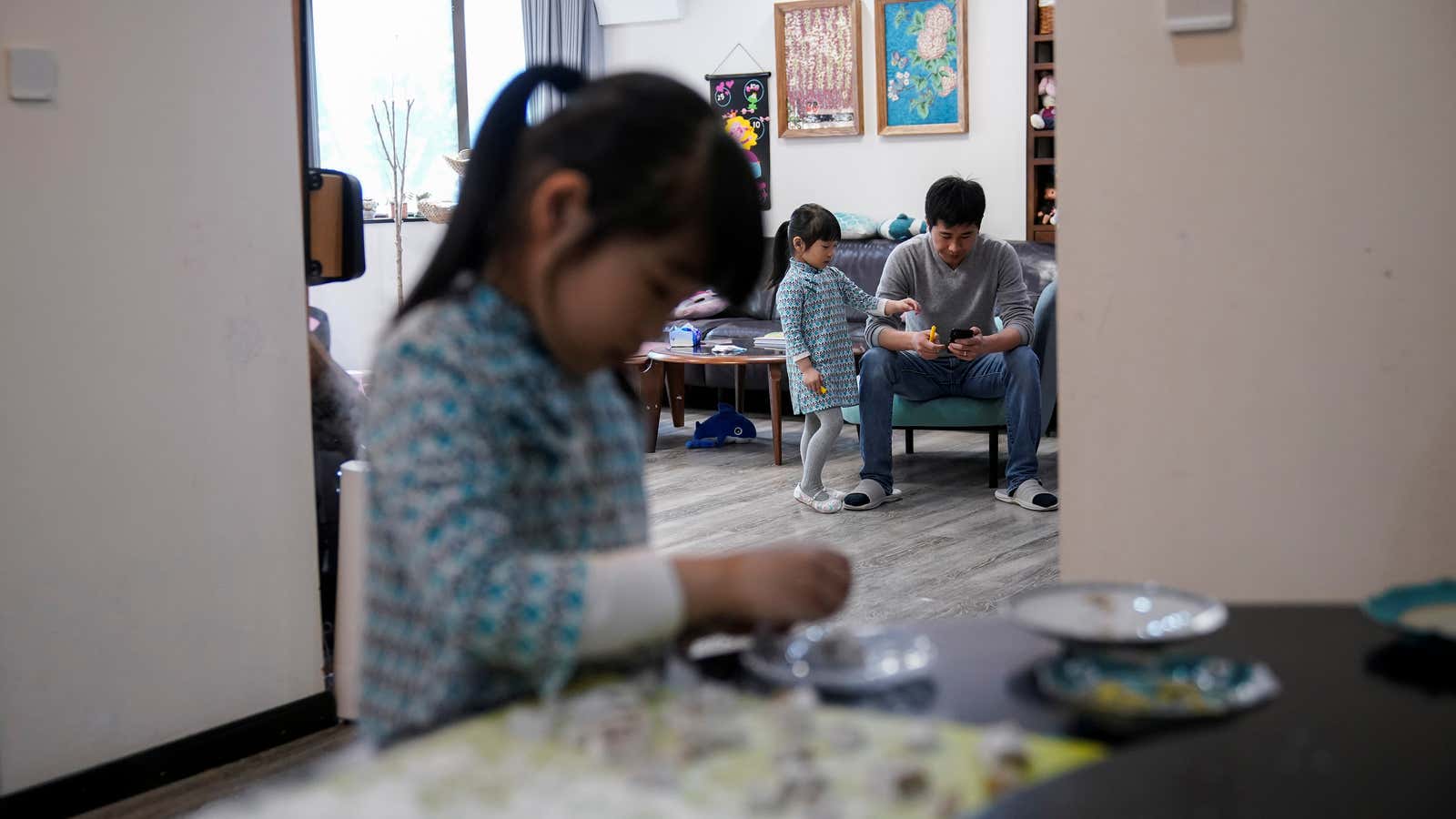Nearly 300 million children are out of school due to coronavirus, with countries like Japan, Italy, and Iran closing their entire school systems to try and stem transmission and buy time as governments and healthcare systems cope with an influx of new cases.
As schools scramble to move teaching and learning online, parents are trying to figure out how to support their children’s academic work while keeping everyone in the household sane. In addition to sharing space with their parents, the kids are battling isolation from peers, a frustration with being cooped up, and a sense that there is no end in sight. Common complaints include too much time spent online, no boundaries between learning at home and learning in the classroom (it’s all homework now), and being lonely.
“Kids have found it challenging, and quite isolating,” said Stephen Dare, head of Hong Kong Academy, which has been closed since February. It’s an independent school with 600 students, ages 3 to 18. “They miss the opportunity to be in groups and to be sharing things in real time,” he said.
Parents are stressed, too, whether worrying about their kids losing learning time, or high-stakes exams that may or may not take place, or how to facilitate their children’s learning at home. And then there are the teachers, whose own well-being has been tested by their school systems’ overnight transition to online instruction. Stuck in their homes, they’re working around the clock to prepare lessons that will be taught in a new and unfamiliar medium, while also trying to help students who are struggling with an utterly alien way of doing things.
In response to demand for resources to support teachers from international schools around the world, Ellen Mahoney, the head of Sea Change Mentoring, created a free guide for teachers: Ten Strategies for Educators’ Wellbeing: A Handbook for Schools During the COVID-19 Outbreak. (Sea Change helps international schools with well-being initiatives and social and emotional learning.)
Some of her tips may seem intuitive. For example, don’t forget to schedule time to exercise—she recommends YogaGlo or Nerd Fitness; videos from Yoga with Adriene or the Scientific 7-minute Workout program also are good options. Other bits of advice Mahoney offers are less conventional, and perhaps useful for parents, as well as teachers, to consider.
Set routines
“As educators we know the importance of establishing a routine for children,” Mahoney writes. “Routines provide structure and a sense of safety, which helps our students to be ready to learn and take intellectual risks.”
Parents know this, too. Kids with bedtimes tend to get more sleep, and more sleep is associated with better physical, psychological, and academic functioning. When the school day has been completely upended, forming new routines is especially important. ”These kinds of crises can make us feel unmotivated or powerless, and a routine helps us to keep focused and helps us feel like we are in control,” Mahoney writes.
Create family schedules. Simple things like getting dressed in regular school clothes instead of lounging around in pajamas can help to normalize a non-normal situation (working-from-guidelines apply here: working in jammies is never really a great idea). Also, help kids understand that if they will be working online for long periods of time, they need breaks to move, to be offline, and to talk to friends.
Connect
Social connection is critical to human survival and quarantine is not conducive to it. Parents have to think creatively about helping kids create the time and space to connect. For example, Hong Kong Academy ran a virtual sports day. It was an effort to help students stay active but also to foster a sense of community. Older kids hardly need help learning how to find friends online, but younger kids might. Set up virtual playdates or a book club with friends, or have everyone watch an episode of a show and discuss it. Have kids cook and share their recipes.
Make sure they know they are not alone
If there is any novelty to staying home, it will likely wear off quickly. The kids may not like their new setup, but you can assure them that 290 million of their peers around the world are in the same boat. Assure them, too, that you are there to support them. “Shared experiences, especially when we think intentionally about them, create culture and community,” Mahoney writes.
She suggests discussing that there are many “normal” emotional responses to a crisis, including fear, confusion, anger, guilt, shame, humiliation, grief, and sorrow. Kids may feel these at different times, and that’s okay. Remind them that others, including their teachers and parents, may be feeling some of that. It’s a good time for self-compassion and compassion for others—a lesson that will hopefully stick with them long after this particular crisis has passed.
